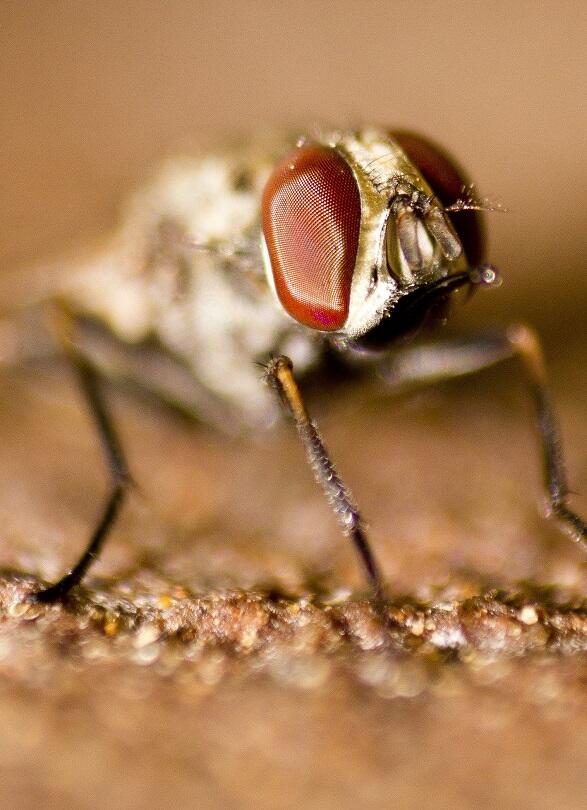
LSTM’s researchers, alongside a talented cohort of colleagues in Argentina, Brazil, Kenya, University of Liverpool, the Crick Institute and LSHTM, have published in PLOS Biology research that validates the drug Nitisinone as a tool to control the transmission of African trypanosomiasis.
In the study, led by LSTM’s Dr Álvaro Acosta-Serrano, the team showed that nitisinone, a drug that is currently used to treat several human genetic diseases, can be repurposed to kill blood feeding insects including tsetse flies.
Tsetse flies transmit the parasitic disease African trypanosomiasis, which is a disease fatal to both humans and animals if left untreated. A vaccine to protect against this disease does not yet exist so transmission control relies heavily on eliminating tsetse populations using a combination of insecticide-based tools (ground and aerial spraying) and bait technologies (tiny targets , tsetse traps, or insecticide-treated cattle).
The FDA-approved drug nitisinone acts by blocking the insect from breaking down the amino acid tyrosine, which is found in abundance in animal blood. The catabolism of tyrosine is crucial for blood-feeding insects such as mosquitoes, ticks and kissing bugs as accumulating amounts of tyrosine becomes toxic to these species if it is not degraded and eliminated. This international team demonstrated that nitisinone was lethal to tsetse flies when administered either orally in the bloodmeal or topically to the insect cuticle. The resulting accumulation of tyrosine led to rapid fly paralysis, tissue disintegration and death as depicted by this time lapse video .
Dr Álvaro Acosta-Serrano said: “Our exciting findings provide evidence that nitisinone could be used as a synergistic strategy alongside current tsetse control practices. The mathematical modelling indicates that this drug could help reduce the transmission of African trypanosomiasis, particularly in outbreak situations, and thus accelerate current disease elimination programmes.”
The current widespread use of neurotoxic insecticides for insect control negatively impacts aquatic and terrestrial environments by reducing populations of beneficial insects, including pollinator species like bumble bees. However, in contrast to commonly used insecticides, the team highlighted that even when fed a continual diet of nitisinone, it was harmless to insects that did not feed on blood.
Dr Álvaro Acosta-Serrano continued: “An important aspect of this research is that this drug is ecologically friendly as it only affects blood feeding insects and not sugar feeders, like bumble bees. Here we present a promising, insecticide-free alternative tool by targeting the insect tyrosine metabolism pathway using nitisinone. This is very exciting because all blood feeding insects share this pathway, which means nitisinone (or other compounds with similar chemistries) could also be used to complement insect control strategies to block the transmission of malaria and other vector-borne diseases in Africa.”
Repurposing the orphan drug nitisinone to control the transmission of African trypanosomiasis
Marcos Sterkel ,Lee R. Haines ,Aitor Casas-Sánchez,Vincent Owino Adung’a,Raquel J. Vionette-Amaral,Shannon Quek,Clair Rose,Mariana Silva dos Santos,Natalia García Escude,Hanafy M. Ismail,Mark I. Paine,Seth M. Barribeau,Simon Wagstaff,James I. MacRae,Daniel Masiga,Laith Yakob ,Pedro L. Oliveira,Álvaro Acosta-Serrano
PLOS Biology Published: January 26, 2021https://doi.org/10.1371/journal.pbio.3000796
